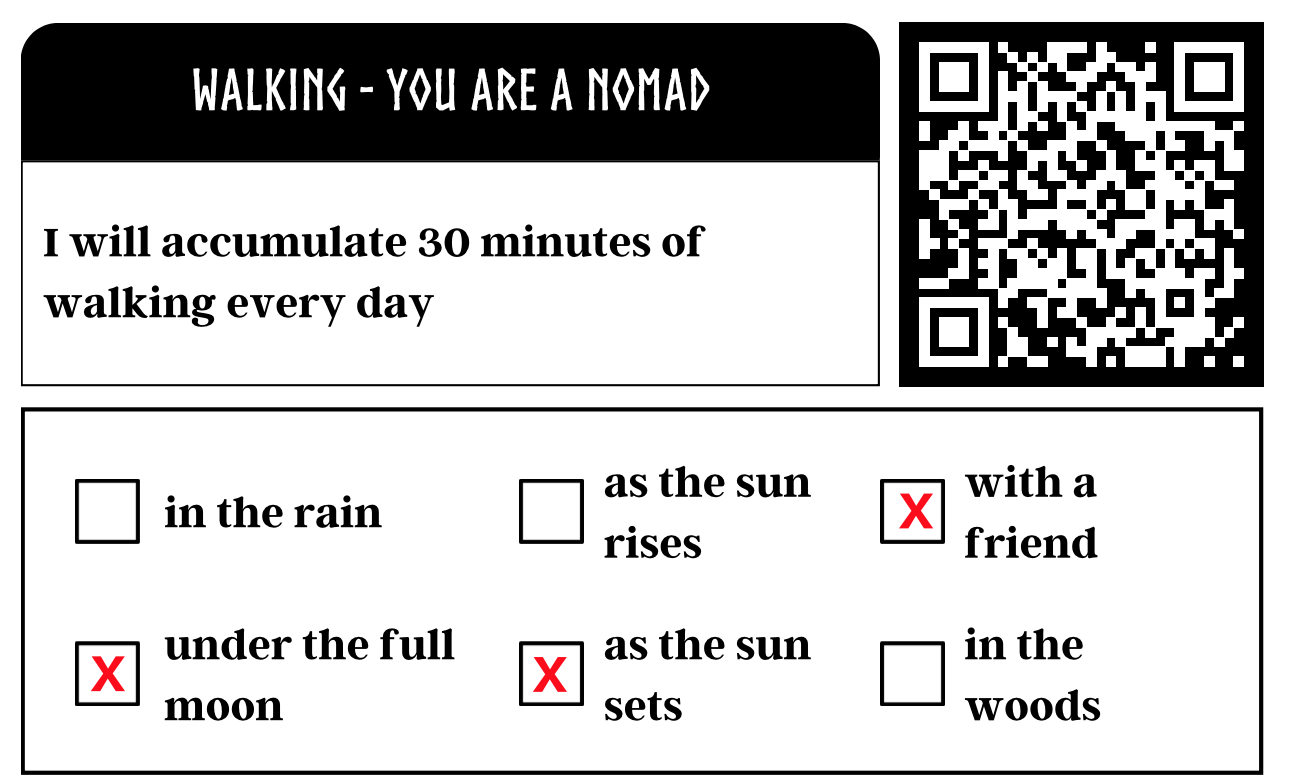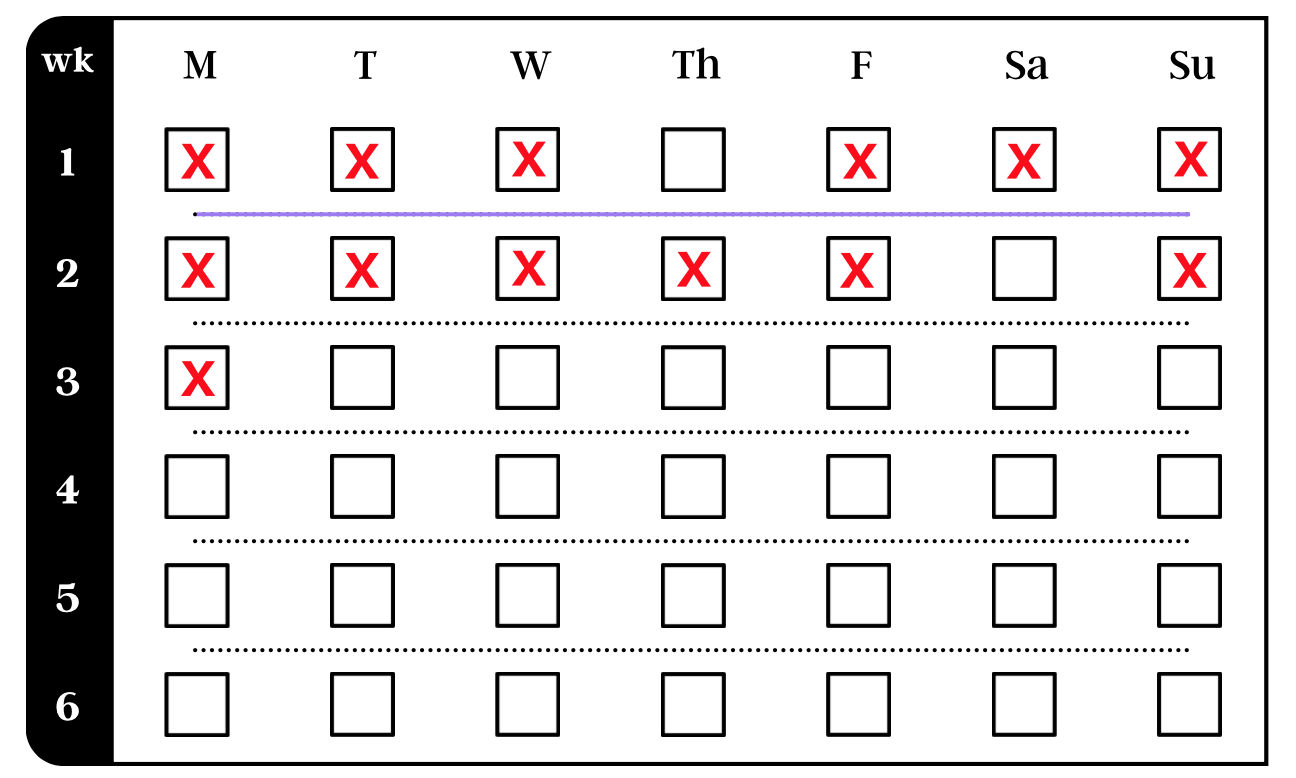hydration quest
you are a Mighty river
Your Quest is to flow like a mighty river! In order for a river to be healthy, it must be continually fed with lots of nourishing water from a clean, unpolluted source.
Our bodies are NO different. In fact, the human body is about 60% water. Because of this, hydration is one of the most foundational practices that can make a massive difference in how we think, feel, and perform.
how will this quest benefit me?
Proper hydration provides many proven life-changing benefits:
Improved Brain Performance
Improved Digestion
More Energy
Improved Weight Loss / Management
Decreased Joint Pain
Better Temperature Regulation
Prevent Kidney Stones
Improved Heart Function
Improved Detoxification and Waste Removal
Fewer Headaches
How to achieve This Quest:
STEP 1: To find how much water to start with, take your bodyweight in pounds, and divide that by 2. That is how much water you should drink, in ounces, per day. For example, if you weigh 150 lbs, you should consume 150/2 = 75 ounces of water per day.
STEP 2: This is the minimal amount of water that you should be drinking per day. Your Quest is to consume at least this much water on a daily basis, for the next 6 weeks. Record how much water you drink daily in your Quest Log.
If you live in a hotter climate, work outdoors, or are active throughout the day, the amount of water can be even higher.
Generally, an adult male needs about 3 liters (3.2 quarts) per day while an adult female needs about 2.2 liters (2.3 quarts) per day. All of the water a person needs does not have to come from drinking liquids, as about 20% of this water is contained in the food we eat.
Tips, Tricks, and FAQ
-
Try to find water from a good, clean source. If you are on a municipal water source, you may want to use a water filter to filter out any heavy metals, chlorine, and other toxins.
-
Avoid drinking liquids that contain sugar or artificial sweeteners, as these can contribute to weight gain and hormonal imbalances. Coffee and beverages with caffeine can be dehydrating to your body. Do not count the consumption of these liquids in your total water goals per day. In fact, you may need to drink more to offset the dehydrating effect.
-
We suggest trying to drink a certain amount of water per hour to meet your hydration needs. This can be done easily if you purchase a bottle with time measurements on it. For example, let’s say you calculated that you should drink 100 oz of water per day. Purchase a 32oz bottle. Drink one bottle before 12pm, one bottle before 4pm, and one bottle before 8pm.
-
Many cans and plastic bottles contain BPA, a harmful chemical. Try to drink out of glass, stainless steel, ceramic, or BPA-free plastic containers. 32-64 oz bottles are a manageable size.
-
Drink 3-8 fluid ounces of water every 15- 20 minutes when exercising for less than 60 minutes.
Drink 3-8 fluid ounces of a sports beverage (5-8 percent carbohydrate with electrolytes) every 15-20 minutes when exercising greater than 60 minutes.
Do not drink more than one quart per hour during exercise.
-
Add about 1.5 grams, or 1/4 Teaspoon, of high quality, unprocessed Sea Salt to every 32 ounces of water that you drink. This will provide the electrolytes your body needs to function optimally.
In general, your water should not taste salty, but it should have a have a nice mouth feel or fullness to it. Experiment to find the right amount for your taste.
Alternatively, drinking mineral water achieves this same effect.
We recommend Celtic Sea Salt or Redmond’s Real Sea Salt.
If you add a lot of salt to your food, you may not need to add salt to your water.
Reverse Osmosis Filters can often strip water of vital electrolytes. If you drink from a RO filter, adding electrolytes back into your water is crucial.
-
In the beginning, you may find that you are urinating very frequently! Over time, the bladder should adapt and strengthen, and your urination should return to normal.
Adding electrolytes helps with frequent urination.
If you find that you are waking up during the night to urinate, try to stop drinking water about 2 hours before bed time.
-
Feelings of thirst can often be a poor indicator of whether or not you need to drink water. In general, if you are feeling thirsty, you are already dehydrated!
-
Try to drink 16oz of water before a meal, or when experiencing food cravings, to improve satiety.
The Importance of water for resilience
To be Resilient is the ability to overcome and adapt to the stressors in our lives. Because we are 60% water, hydration plays a major role in our ability to adapt to extreme situations and environments. With adequate hydration, our bodies will perform better, feel energized, and become less prone to cramping or joint injury. Our digestive and cardiovascular systems can handle stress better, and our minds will feel sharp and ready for action.











